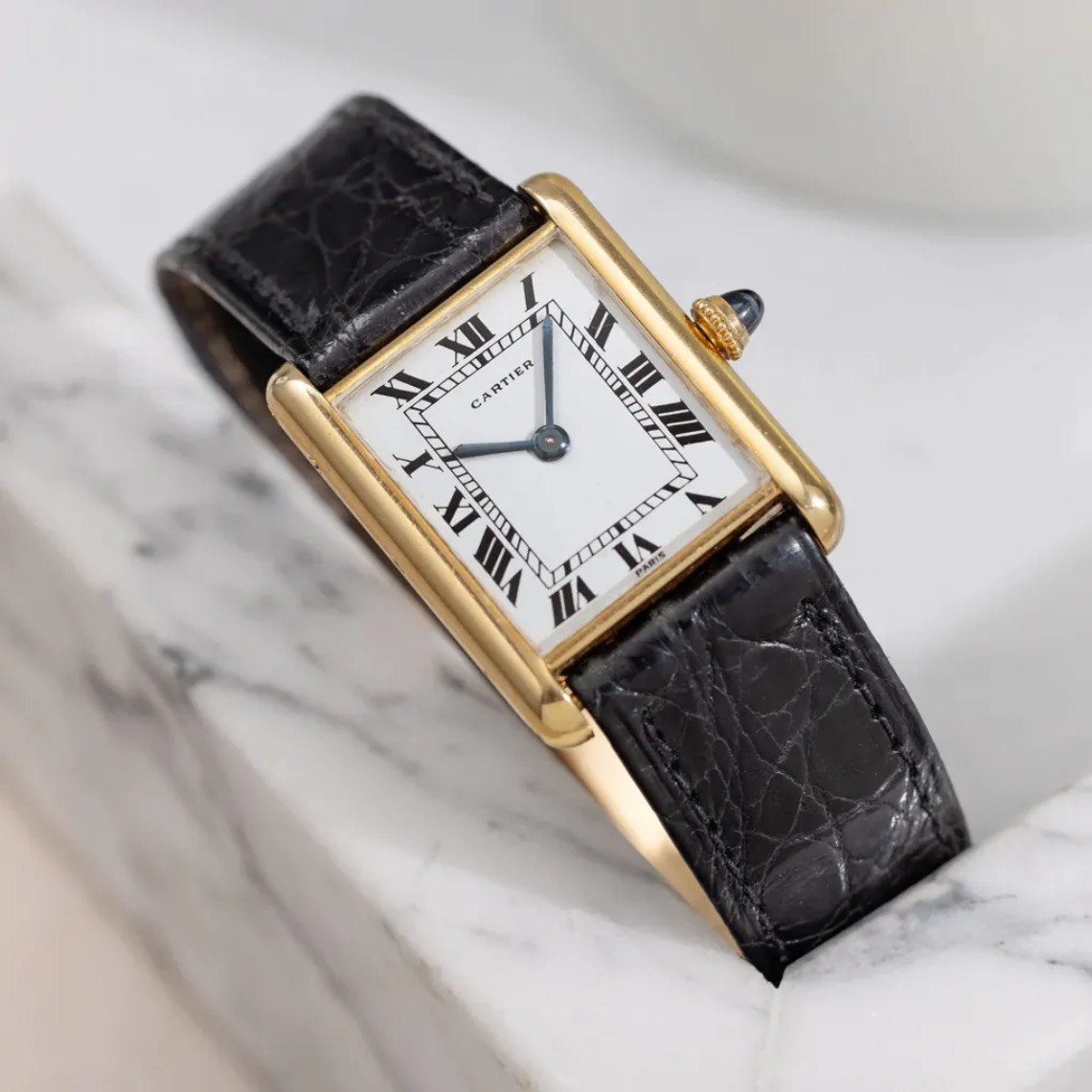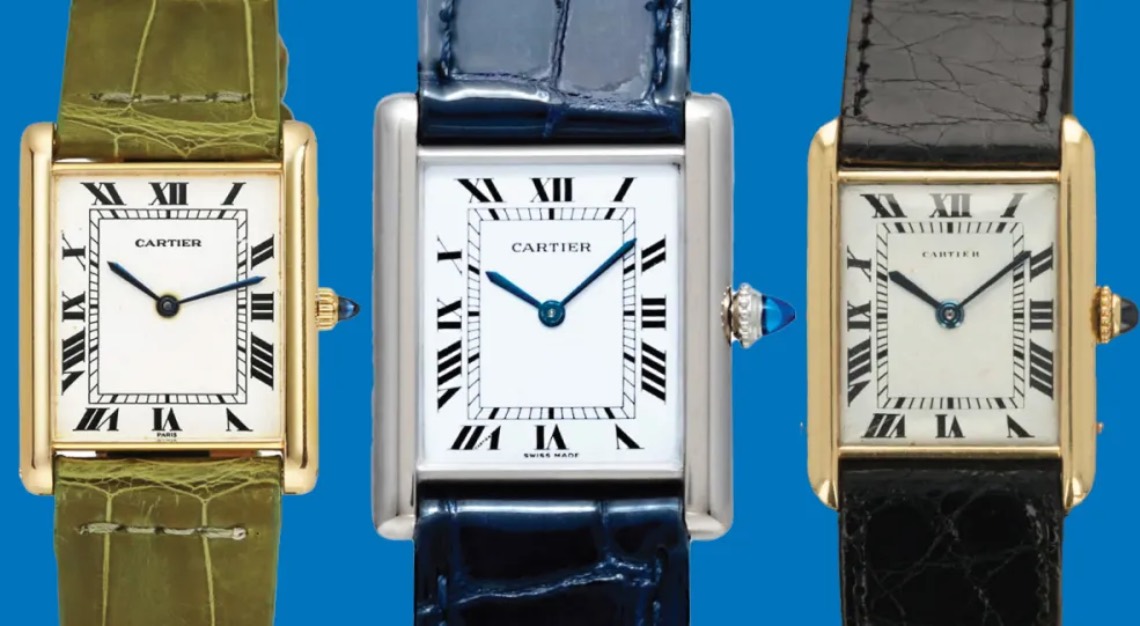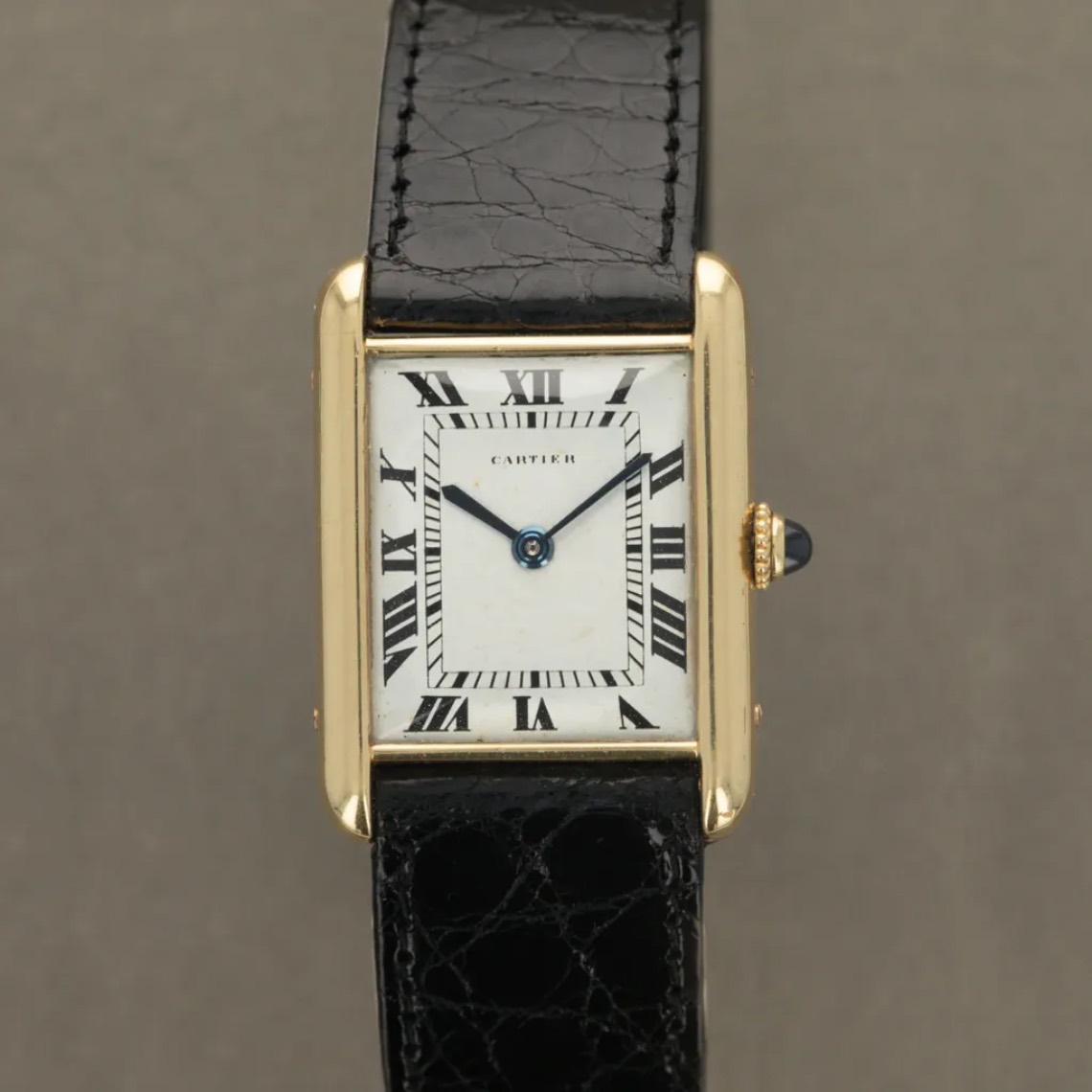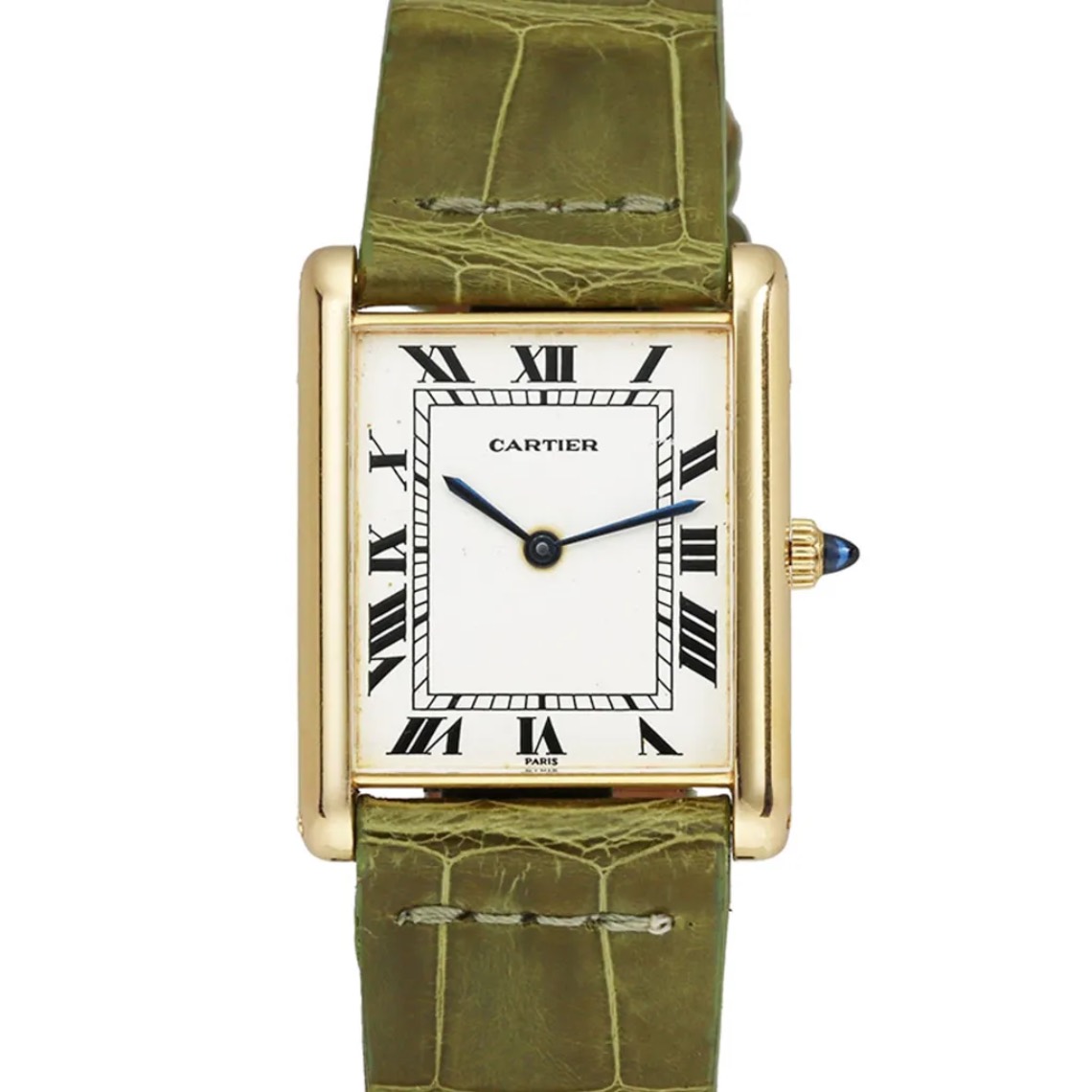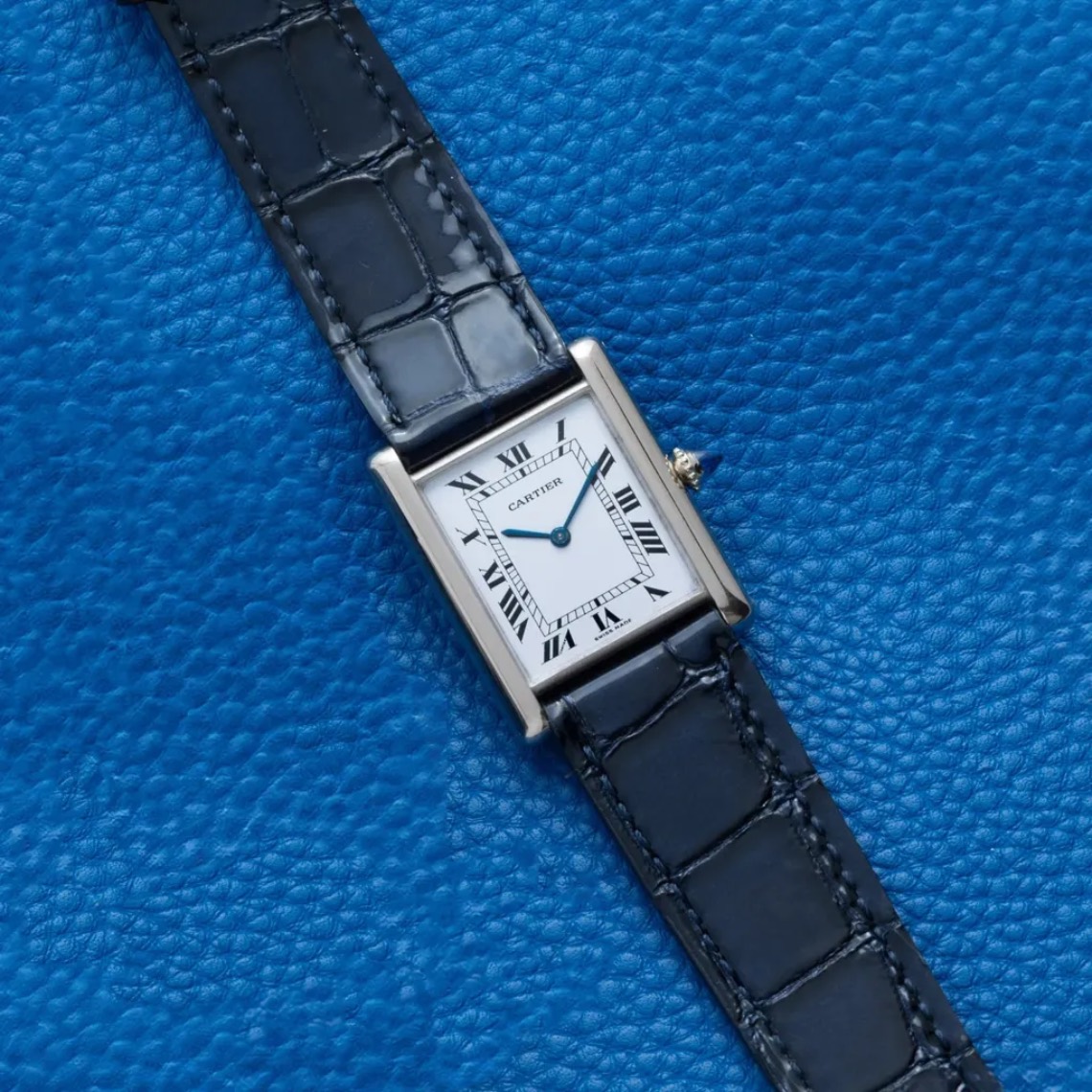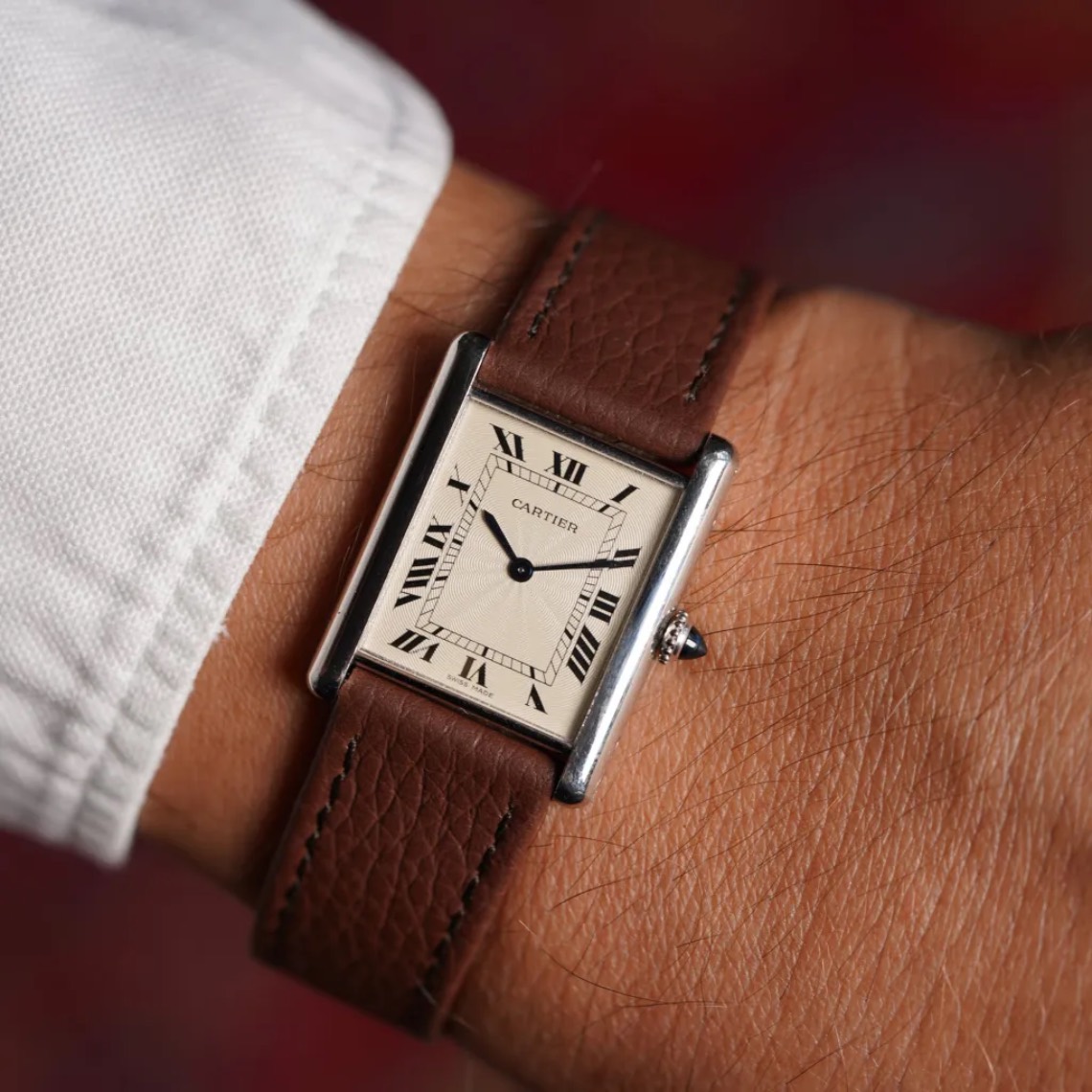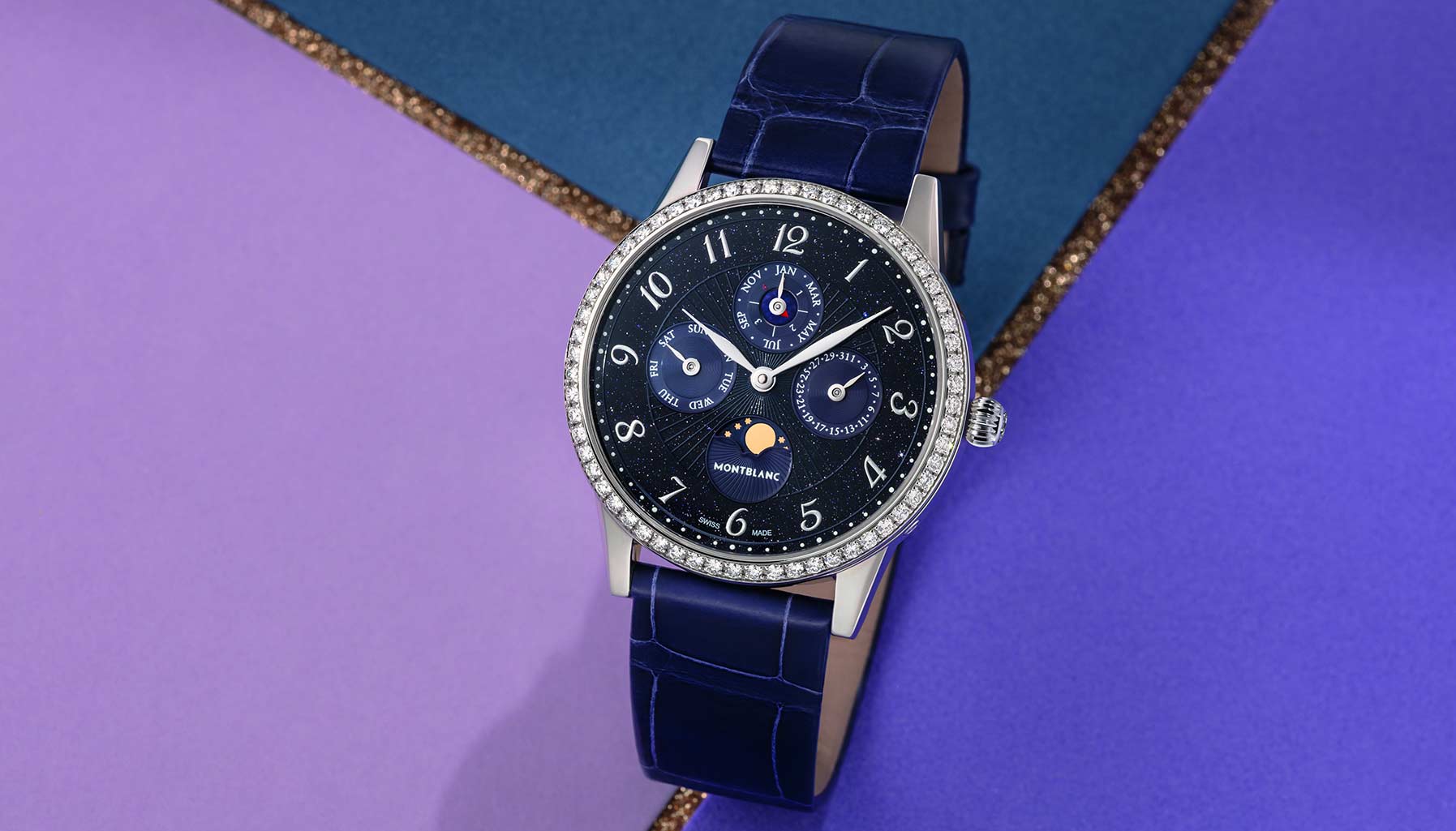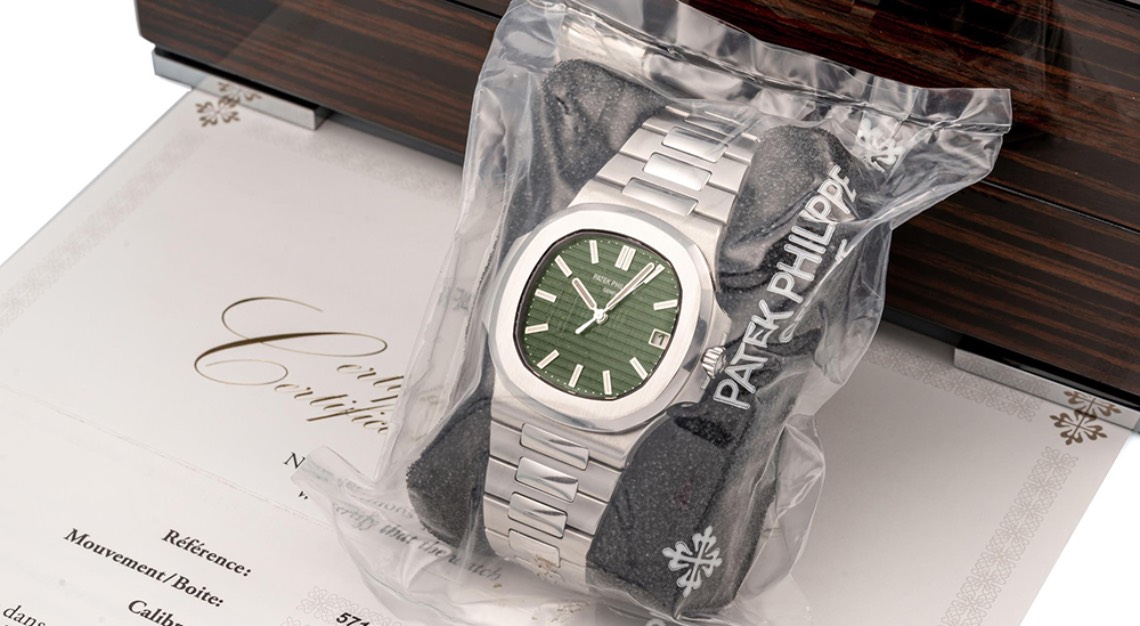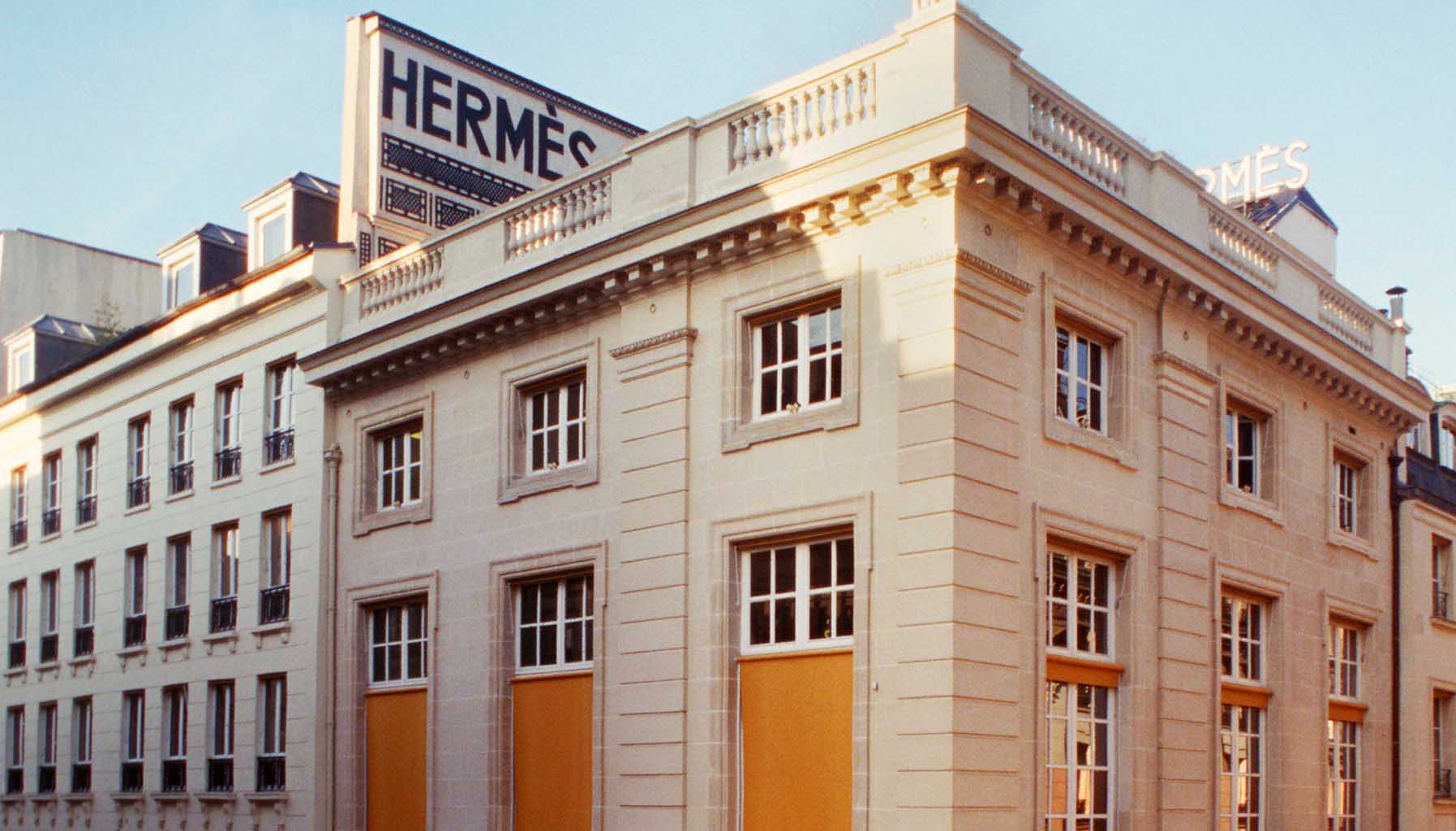Cartier watches are rising in value as the rest of the market dips. These vintage Tank Louis models are the very best examples on the market today
If you just have to see these five amazing Tanks we’ve curated right away, scroll as you see fit.
But, unless you’re already an expert, we feel it’s important to get your head around some context on Cartier watches before diving into the wonderful world of Tanks.
We’ve been bringing you, our fellow collectors, some happy news lately, stating that the global watch market continues to lose value. This has created a sustained buyer’s market. Using market analysis tools, we’ve shown that Patek Philippe’s Nautilus, the Audemars Piguet Royal Oak and even the highly collectible vintage Omega Speedmaster continue to dip in price.
And then there’s the curious case of Cartier, which keeps going up.
Cartier as a brand has experienced a 7.27 per cent increase in market performance over the past 12 months according to ChronoPulse (Chrono24’s data tool), with much of that increase coming in the last three months alone. Custom Cartier watches and rare vintage pieces are through the roof, while the standard model Tanks also are going up, but remain relatively more attainable.
Why is Cartier on the rise?
That’s a difficult question to answer. Watch trends are as predictable as weather, but smaller watches and dressier watches are as undeniably on the rise as this summer’s heat. When the very small Cartier Tank Mini swept headlines during Watches & Wonders this year, we knew the small watch trend had momentum. Then, just this week, our local pizza guy told us “I just can’t wear a big watch. I need a 36 mm piece, bro.” Meanwhile, stars like Pharrell Williams are pushing high jewellery and Usher is rocking tiny gold watches. For whatever reasons, small and dressy things are having a moment.
Trends can disrupt one’s sensibilities, and shopping a new category can be confusing. But with Cartier watches, the situation can feel overwhelming. When you dip a toe into the vast ocean of Cartier watches, you find yourself adrift in endless choice. Narrowing it down to the Cartier Tank should make things easier, right? Guess again: There are seemingly endless iterations and sub-models of the Tank scattered across the vintage and pre-owned markets. For these reasons, we not only curated five of the very best vintage Cartier Tanks on the market today, but we have gone straight down to the most refined, and most classic Tank there is: The Cartier Tank Louis.
As history has it, Louis Cartier first designed the Tank watch and released it in 1917. Being an obsessive designer, Louis soon refined the initial design and offered a second iteration. In the Paris atelier, the craftspeople and business folks began to refer to the first design as the Tank normale, while the second design that Louis favored became the Tank Louis. There were not carefully thought-out product names, just organic shorthand among co-workers. When these names were adopted into official Cartier-speak is not clear, but these are the real model names today.
The Tank Louis specifically saw an elongation of the rectangle and a softening of the corners of the rails that run vertically along the sides. These rails are known as brancards, which roughly translates to “rails” in French, but also means “stretcher,” as in what you’d take a wounded soldier away in (you can picture the two wooden slats on either side of the stretcher, perhaps). No one refers to them as “the tracks” as you might expect for a watch said to resemble a military Tank (a name we believe was tagged on after the watch was already completed, this in contradiction of lore that says the military vehicle inspired the design). When people speak of Cartier Tanks, the word brancards gets thrown around along with cabochon, which is the name of the jewel atop the crow (usually a blue sapphire).
Watch expert James Lamdin of Analog:Shift told Robb Report that, “The Tank Louis is not only an icon of watch design favored by fashionable wearers for a century, but often represents a more utilitarian-minded collector’s first step into the realm of dress timepieces. As such, it isn’t just the Louis’ perfect symmetry, stylish dial, or bold brancards that make it so important a model—it’s the entire world of elevated, design-forward timepieces for which it acts as a gatekeeper.”
We agree with Lamdin, and would put another spin on his take: If you’re only going to have one small dress watch in precious metal, make it a Cartier Tank Louis. We run out of fingers when we count collector friends who own baskets full of tool watches a then also just one Tank Louis. There’s good reason for that, because the Tank Louis is a stone cold classic.
It’s helpful to know the rough history of the Tank in order to understand our recommendation of the Louis model. The first Tank came out in 1917, and it turned the wristwatch into a fashionable item, such that by the 1930s wrist watches were starting to outsell pocket watches. Three houses of Cartier produced Tanks, one each in Paris, London and New York. By 1974, Cartier had sold all three branches, ending an era. It was during the 1970s that mechanical Tanks gave way to quartz models, as well as the affordable, gold-plated Must de Cartier Tanks designed to compete with counterfeits. Folks like Andy Warhol had made the Tank so popularin the 1970s that the watch sadly descended the luxury food chain to swim among horological bottom feeders. (Despite this, the Must de Cartier Tanks of the 1970s are popular with some collectors, and prices have shot up wildly in the past few years.)
In 1998, Cartier seems to have noticed its inability to overcome it’s reputation for poor quality watches, and the company initiated the highly-regarded CPCP program, which stands for Collection Privée Cartier Paris. CPCP watches were beautifully produced, and included mechanical movements from high end Swiss makers. CPCP models remain highly collectible today, but with this week’s curation we are going further back.
We have curated only the very best vintage Cartier Tank Louis models available for sale right now. These are all mechanical models in solid precious metals—no quartz, and no gold-plating, and all five are pre-CPCP. In other words, these five watches are at the very top of the horological food chain, and even more elevated today as vintage collectibles.
Let’s dig in.
